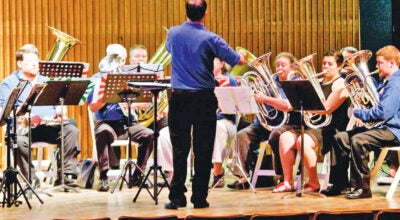Landscaping can be natural way to attract birds
Published 10:25 am Thursday, June 25, 2009
PROCTORVILLE — Bird feeders do the trick. But there are more natural ways to attract our fine feathered friends.
That was one of the points Kari Kirschbaum, wildlife biologist for the Ironton District of the Wayne National Forest, told guests at the Eastern Branch of the Briggs Library. Kirschbaum gave a lecture on attracting Ohio birds Wednesday afternoon as part of the library’s series of adult education programs.
“If you provide the main elements, they should come,” she said.
Those elements are water, a place for the birds to raise their young, shelter from weather and predators and food. And food can easily come from appropriate landscaping.
“If you use a wide variety of plants, it will be less cumbersome on you and you will get a wide diversity of birds,” Kirschbaum said.
Native vegetation includes blackberry bushes, sunflowers, grasses like eastern redburn and conifers such as junipers and balsam fir. Nectar producing plants will attract such species as hummingbirds. Those plants include bee balm, jewel weed, delphiniums and salvia.
To keep feed for the birds through the year a homeowner may plant fall-fruiting vegetation such as dogwood and mountain ash. Dogwood is especially versatile as it offers spring flowers then seeds for the birds in the fall.
Winter-fruiting plantings include crab apples, sumacs and Virginia creeper. Nuts and acorns can be provided by oaks, hickory trees and buckeyes.
Brush piles, evergreens, even discarded Christmas tress can provide shelter for birds.
“Birds, especially in the winter time, love them,” she said.
If a homeowner wants to provide a synthetic means of shelter, nest boxes must be weather resistant and well-ventilated with the entrance hole facing from the prevailing winds.
Cavities in trees and shrub can also provide shelter and a place for nesting.
“If you can leave a dead tree standing, it is great for birds. There are insects for food and shelter,” she said.
Something as simple as a plastic tray with only two inches of water can be just as effective a bird bath as the more elaborate ceramic and stone baths. If you use a readymade feeder, make sure it is either very close or very far away from a window.
If it is sufficiently close to the house, the bird will be slowing down in flight and will have less chance of flying into a window. And the feeder should be at least five feet off the ground to give the birds protection from predators.




